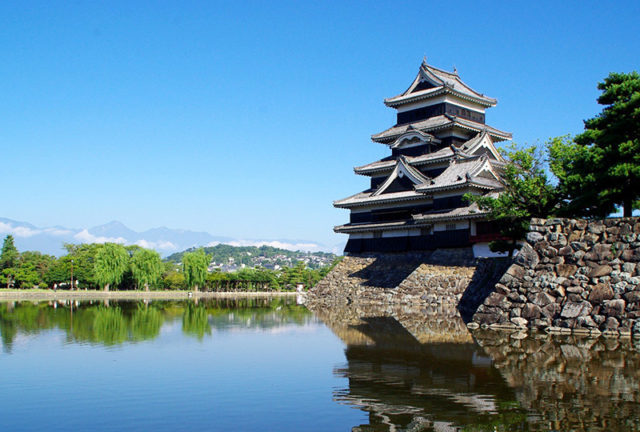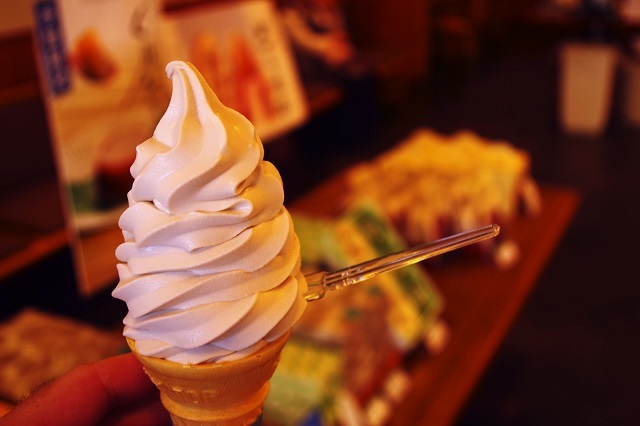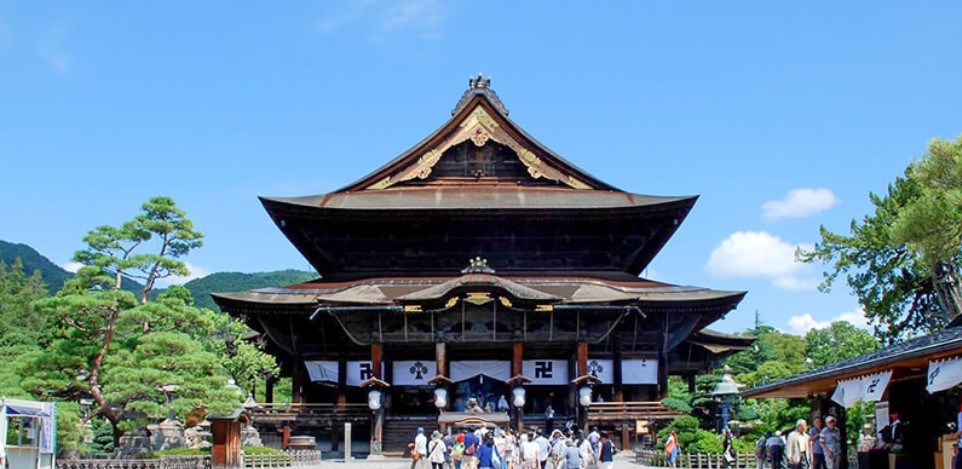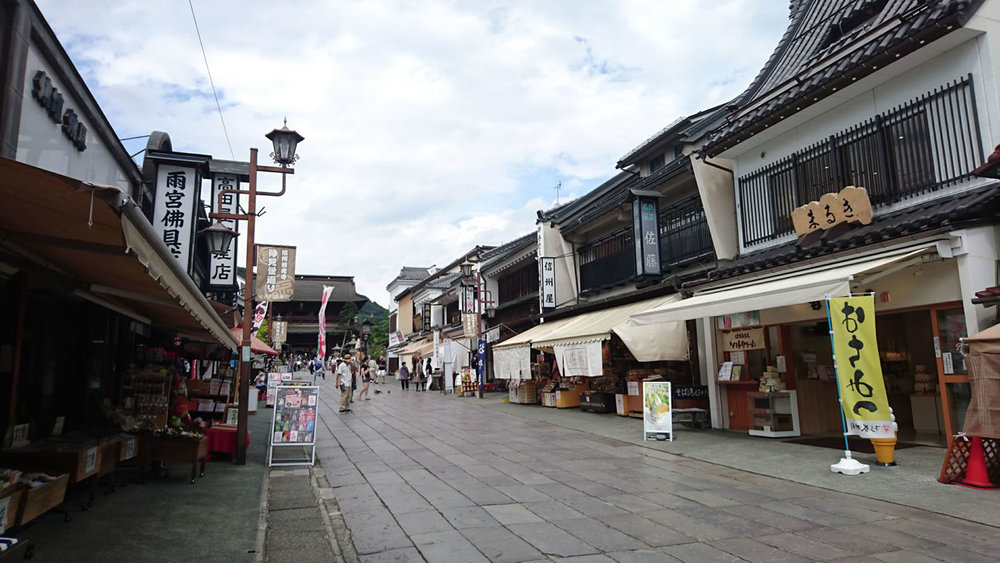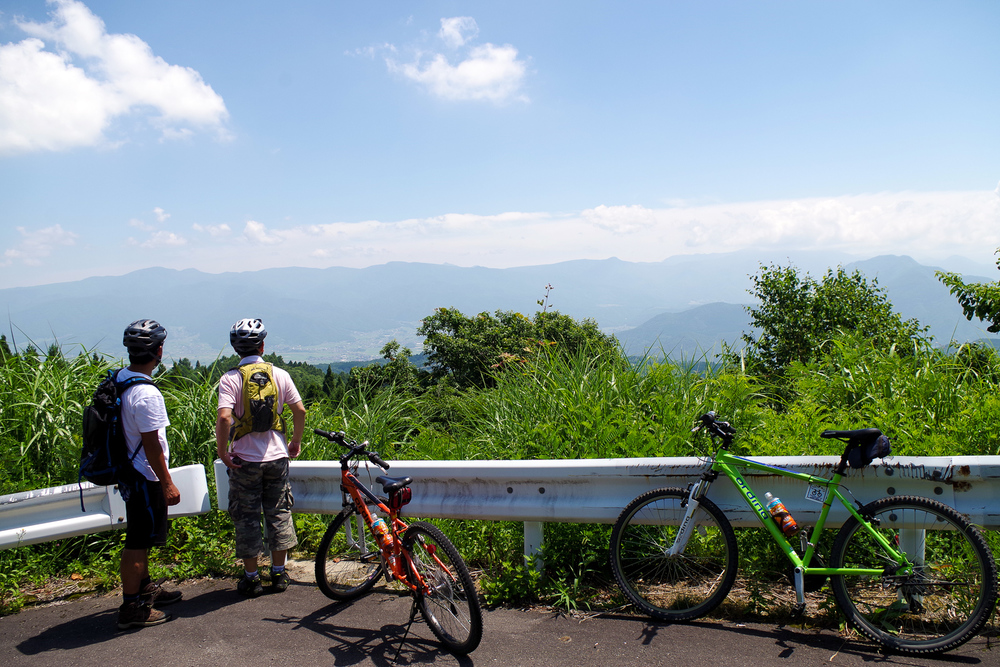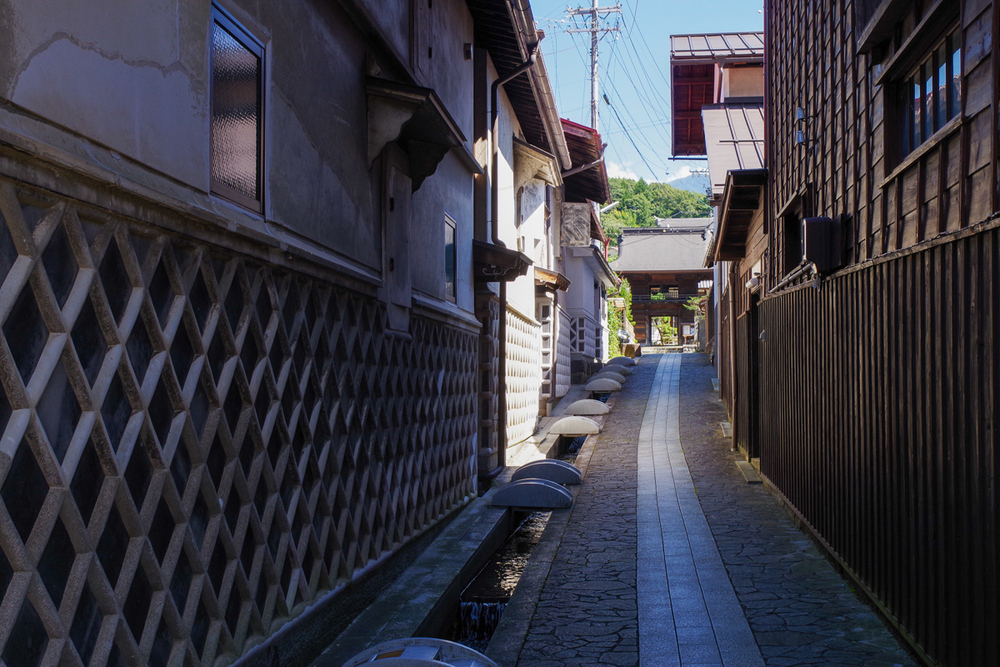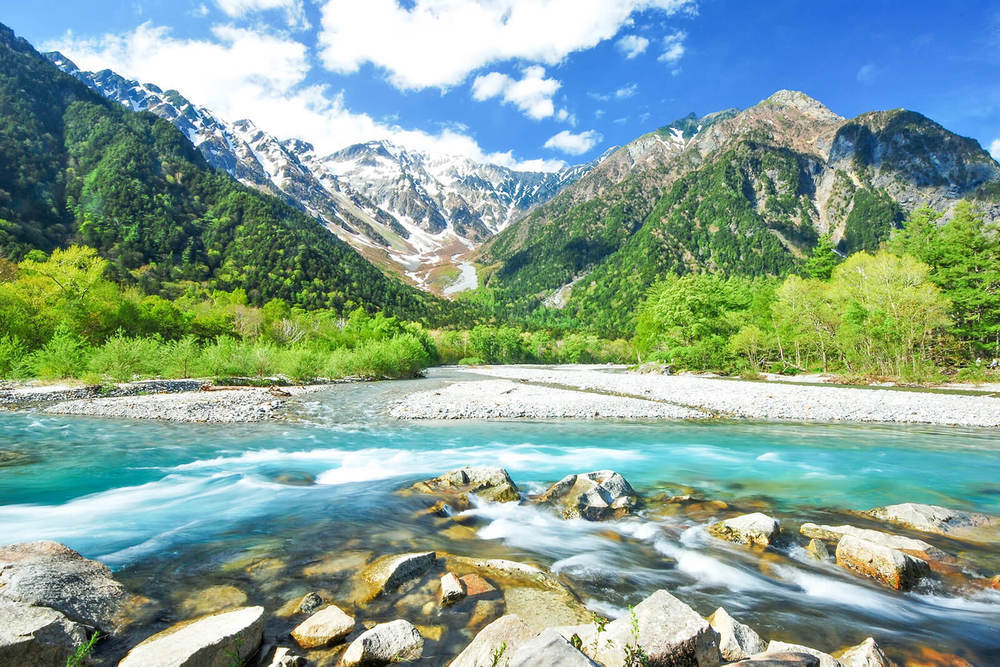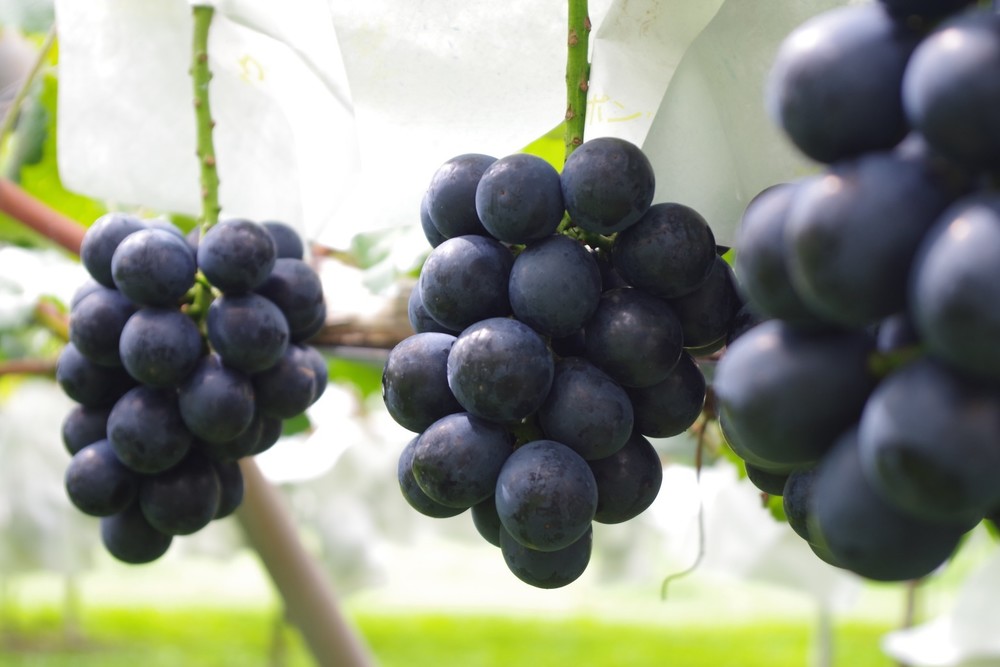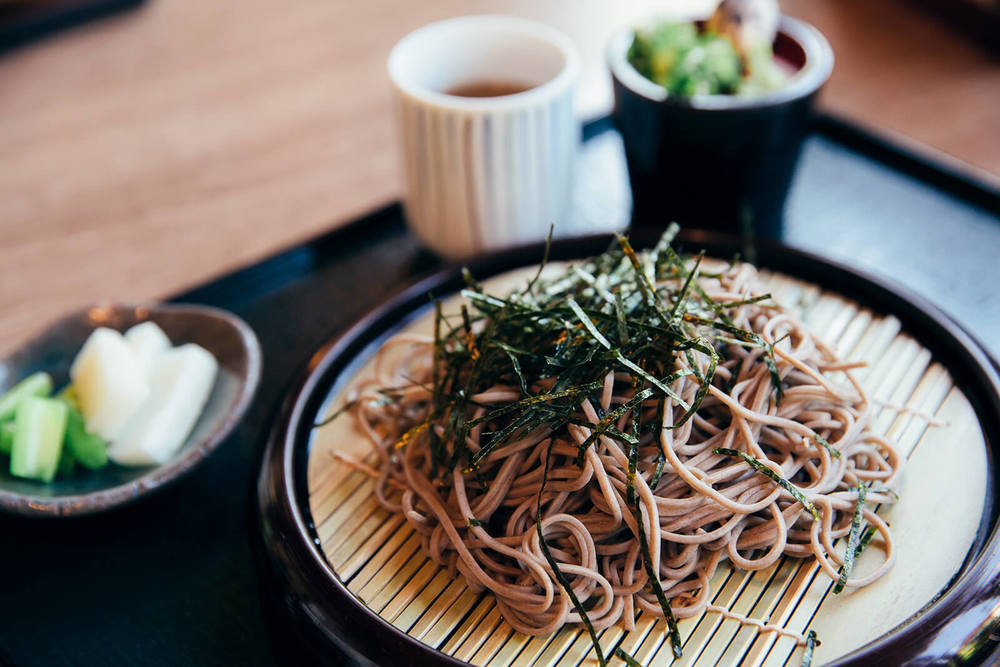Soba 101: its Many Varieties and Where to Eat them

Over the years there have been numerous studies and diets claiming that certain foods can extend your life. I’d say to look no further than Nagano, considering that its men and women have the highest life expectancy in all of Japan.
Some say that it’s due to the traditional diet of people here—it was difficult to find protein and rice was hard to grow, so folks made do with whatever they could find or produce in the harsh climate. That included eating grasshoppers and bee larvae, wild vegetables, saplings and buckwheat grains. Many of Nagano’s traditional foods reflect that lifestyle, and one of its most popular dishes is Soba.
What’s in Soba
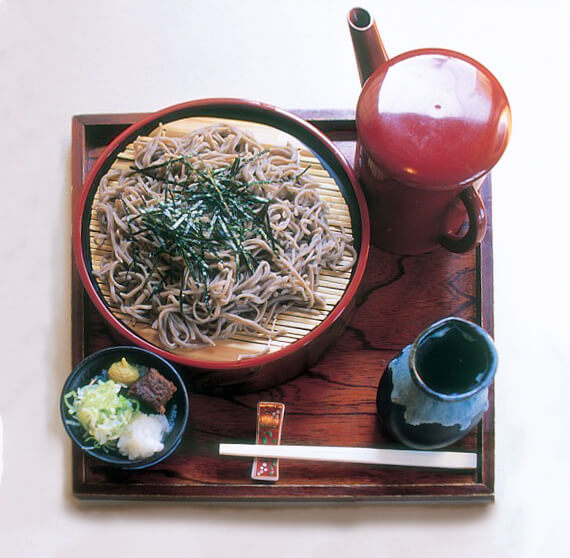
From Top Left to Bottom Right: soba noodles, soba-yu, condiments and tsuyu broth.
Soba is made from ground buckwheat flour, water and a binding agent to keep it together. The most common binding agent is wheat flour, but some places may use chicken eggs (known as tamago-kiri soba), or potatoes and seaweed starches (known as hegi soba). Some restaurants produce soba without binding agents through special techniques, making 100% buckwheat soba (called ju-wari soba).
Soba is served with a broth called tsuyu. It is usually made with soy sauce, mirin or rice wine, sugar, katsuobushi (shavings from a cave tuna) and seaweed. It also comes with condiments that you can add to the tsuyu as you like, usually in the form of grated radish, scallions and wasabi.
Soba-yu may be served with your meal or afterwards. It is the leftover water used when boiling soba. It contains starches and proteins from the soba and has a soft and slightly creamy taste. You can drink it as it is, or pour it into your remaining tsuyu at the end of your meal.
While tsuyu almost always contains fish, vegetarians can still enjoy soba as-is or by sprinkling it with salt. The latter is a common way of eating soba after the new harvest, so other patrons probably won’t stare at you in utter horror as you’re eating.
Types of Soba
Soba menus can be confusing to the uninitiated. Like a tex-mex menu, the dishes have different names but all the pictures are of the same ingredients in slightly different arrangements. Preparations may change from store to store, but at most soba restaurants, you’ll have three main choices of soba: Mori or Zaru soba, Kake soba and Bukkake soba.
Mori soba or Zaru soba is cold soba served on a bamboo slotted plate with cold tsuyu on the side. You dip your noodles into the broth just before eating them. These days, there’s no real difference between the two besides the plate that it’s served on, and a sprinkling of nori on the latter.
Kake soba is soba served in a bowl of heated tsuyu, resembling ramen.
Bukkake soba is soba served in a shallow bowl with warm tsuyu on the side, which you pour over the soba when ready to eat.
Which type of soba you choose it up to you, but I’d recommend trying Mori soba first to really enjoy the flavor of the broth and noodles.
Eating Soba in Nagano
Three styles of soba may seem paltry to you, but thankfully in Nagano there are many more types of soba to try! Areas such as Togakushi, Kaida Kogen, Ina and Nagawa are known for their delicious buckwheat and long history of soba cuisine. Visit Togakushi during a long weekend or holiday and you’ll see just how popular Nagano soba can be. If you have the chance, journey to some of these areas and try their unique soba dishes
Takatō Soba

高遠そば by Mko360. Licensed under CC-SA 4.0 via Wikimedia Commons.
The Takatō area of Ina is well known throughout Japan for its breath-taking cherry blossoms in mid-April. But what many people don’t know is that this area is also one of the first places to produce soba noodles, and they have their own style of soba here. In fact, soba was so thoroughly a part of Ina’s culture that there were hardly any soba restaurants at all; families always ate it at home.
Takatō Soba is served with a side of tsuyu and grilled miso paste. The tsuyu is poured over the miso and mixed together, then used as a normal dipping sauce.
For places to eat Takatō soba, see the restaurant list below!
Tomikura Soba
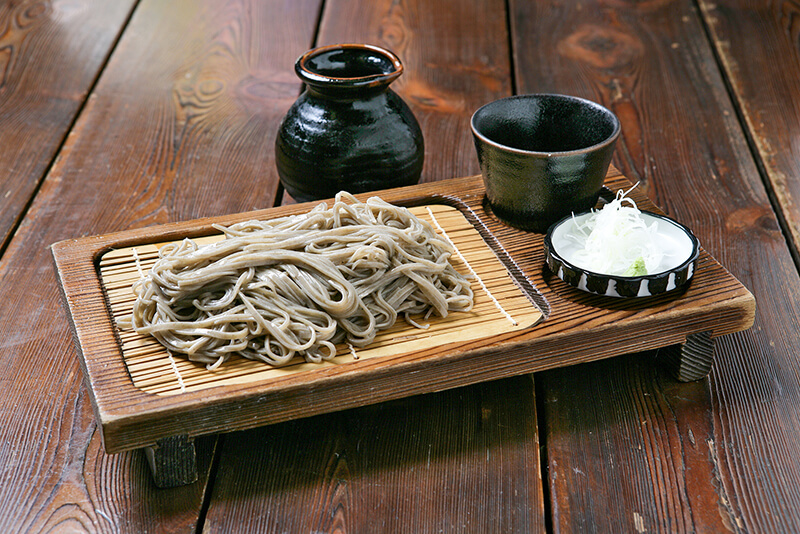
In cold, snowy Iiyama is another kind of Nagano soba. Tomikura soba is made with plant fibers that give the dough incredible strength and elasticity. The dough can be rolled so thin that you can read a newspaper through it. The soba is semi-translucent and has an al dente bite. While trying Tomikura Soba, you can also enjoy Iiyama and neighboring Niigata’s traditional Sasazushi (another vegetarian-friendly treat!).
See the restaurants below for places to eat Tomikura soba! Also see <a href="http://www.iiyama-ouendan.net/en/food/f-products/tomikurasoba/" target="_blank">Iiyama’s English tourism website</a> for even more information.
Tōji Soba
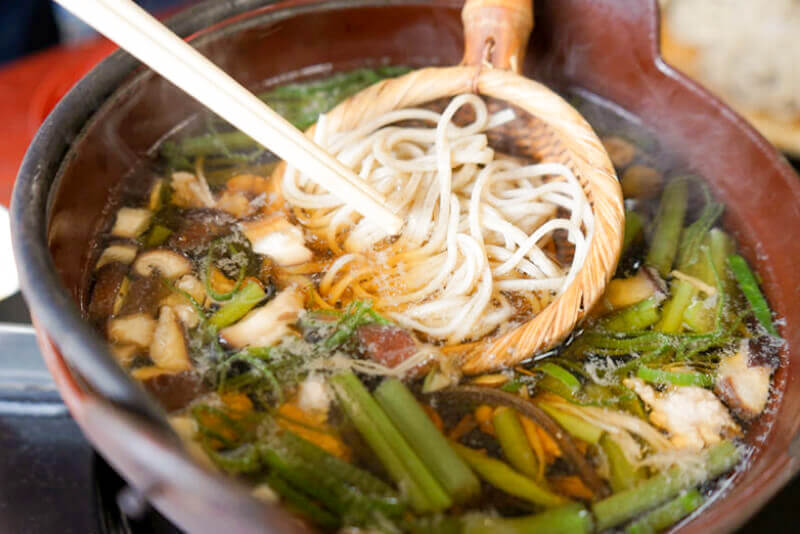
This soba variety is served in areas including Matsumoto, Nagawa and the Kiso Valley. A large nabe pot is filled with Tsuyu and seasonal vegetables, then heated. Guests steep their noodles in the broth for a few seconds before eating it together with the pot’s veggies, similar to shabu-shabu. It’s a great soba dish to warm up with in the winter.
Additional Information
If you enjoyed this article or have some suggestions for what I should write about next, please leave a comment! For more information on soba restaurants in Nagano, you can use the Unique Nagano website. For those of you who won’t be visiting the areas I listed in today’s blog, there are more great soba restaurants further below!
Takatō Soba Restaurants
| Name | Kerun 華留運 |
|---|---|
| Address | 1621-1 Takasuna, Takato, Ina, Nagano Pref. 伊那市高遠町高砂1621-1 |
| Hours/th> | 11:00-15:00, 17:00-22:00 |
| Holidays | Wednesdays |
Takato Soba with various Tsuyu styles: spicy radish, grilled miso and walnut to name a few.
| Name | Rakuza 楽座 紅葉軒 |
|---|---|
| Address | 305-1 Kohara, Takato, Ina, Nagano Pref. 伊那市高遠町小原305-1 |
| Hours | 11:00-14:00 |
| Holidays | Tuesdays |
In addition to Takato Soba, you can try a variety of Sakuraniku dishes here. Sakuraniku, or ‘cherry flesh,’ refers to the dark red color of horse meat.
Tomikura Soba Restaurants
| Name | Rokubee (雪と寺の町のDining 六兵衛) |
|---|---|
| Address | 32-5 Minami-machi, Iiyama, Nagano Pref. 〒389-2254 長野県飯山市大字南町32-5 |
| Hours | 1:30-14:00, 17:00-21:30 |
| Holidays | Year-end holidays (Dec. 31 – Jan. 3) |
A 7-minute walk from Iiyama’s beautiful Shinkansen station. It serves local rice and produce along with Iiyama’s specialties: sasazushi and Tomikura soba.
| Name | Hashiba Shokudo はしば食堂 |
|---|---|
| Address | 3206 Taki no Waki, Iiyama, Nagano Pref. 飯山市滝の脇3206はしば食堂 |
| Hours | 10:00 to 18:00; 10:00 to 17:00 (Nov. to Mar.) |
| Holidays | Tuesdays |
Located in the small village for which Tomikura Soba got its name. It’s not easy to reach without a car, but it’s definitely worth it if you can.
| Name | Kajika-tei かじか亭 |
|---|---|
| Address | 1769 Tomikura, Iiyama, Nagano Pref. 長野県飯山市富倉1769 |
| Hours | Lunch (until the Soba runs out) |
| Holidays | No scheduled holidays |
Located in the small village for which Tomikura Soba got its name. It’s not easy to reach without a car, but it’s definitely worth it if you can.
Toji Soba Restaurants
| Name | Takagi 和食そば処たかぎ |
|---|---|
| Address | 3-5-12 Ote, Matsumoto, Nagano Pref. 380-0874 〒 390-0874 松本市 大手 3-5-12 |
| Hours | 11:00-20:00 (Sometimes until 18:30) |
| Holidays | Occasionally closed |
Located nearby the family mart on the way to Matsumoto castle. Offers 100% buckwheat noodles made with Azumino soba. Touji soba and other local specialties such as Oyaki, Sanzoku-yaki and Basashi are also available.
You can also try a soba-making workshop here!
| Name | Miyota みよ田 |
|---|---|
| Address | Goko Honmachi Building 1st Floor, 2-1-24 Chuo, Matsumoto city, Nagano Pref. 長野県松本市中央2-1-24五幸本町ビル1F |
| Hours | 11:30-15:00, 17:00-22:00 |
| Holidays | Sunday Evenings |
A 5-minute walk from Matsumoto station. A true soba specialist. In addition to local Japanese sake, you can also try shochu made with buckwheat. Full soba
and Tōji soba dining plans are available.
Even More Soba Restaurants
If you’re in Nagano, Togakushi or the Kiso Valley, here are a few other great soba restaurants for you.
| Name | Ju-wari Soba Daizen 十割そば大善 |
|---|---|
| Address | 46-1 Daimon, Nagano city, Nagano pref. 長野県長野市大門町46-1 |
| Hours | 10:30-15:00 |
| Holidays | Wednesdays |
On the way to Zenko-ji before reaching the Daimon intersection.
In addition to ju-wari soba they also serve sobagaki, buckwheat dough as it was eaten by people centuries ago. But here it’s fried.
| Name | Uzura-ya うずら家 |
|---|---|
| Address | 3229 Togakushi, Nagano city, Nagano Pref. 長野県長野市戸隠3229 |
| Hours | 10:30-16:00, or as soon as soba runs out |
| Holidays | Wednesdays |
People travel from all around the country to eat Togakushi soba, and this is one of its most popular restaurants. Located near Togakushi’s Chusha shrine and the Chibiko Ninja village.
| Name | Kurumaya くるまや本店 |
|---|---|
| Address | 5367-2, Fukushima, Kiso, Nagano Pref. 397-0001 397-0001長野県木曽郡木曽町福島5367-2 |
| Hours | 11:00-15:00 |
| Holidays | Wednesdays |
A 5-minute walk from Kiso Fukushima station. This soba restaurant has been operating for over 300 years, featuring hand-ground soba noodles and an out-of-this-world tsuyu that’s been brewing since they began.
| Name | Oginoya おぎのや | |
|---|---|---|
| Address | 1123-1 Yabuhara, Kiso-mura, Kiso, Nagano Pref. 長野県木曽郡木祖村大字薮原1123-1 |
|
| Hours |
|
|
| Holidays | Wednesdays |
A 5-minute walk from Yabuhara station, near Narai-juku. No pictures on the menu but you can get mori or kake soba, along with kamoseiro (soba with duck-filled tsuyu) or grilled miso.
Update:2021/11/17


